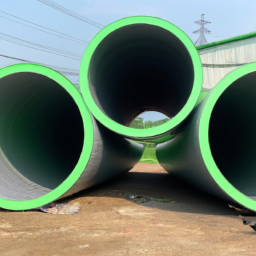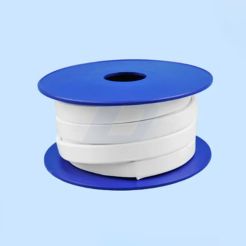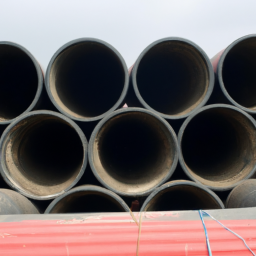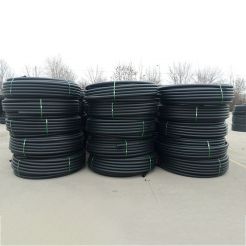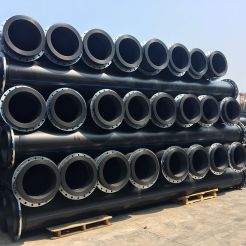Macroporous weak base anion exchange resin
HAL LAN ™ D301 is a macroporous weak base anion exchange resin with styrene-DVB matrix, having tertiaryaminegroups.D301 series together with strong base anion exchange resin is used in water treatment, resultinginincreasingtheoperating capacity and decreasing regenerant level and rinse.Aslso used in cane sugar and corn syrupprocessing.
Product Description
HAL LAN ™ D301 weak base anion resin Key features and benefits:
High operating capacity
Physical and Chemical stability
Excellent regeneration efficiency
|
Index Name |
D301 |
|
Appearance |
Light yellow opaque sphere |
|
Ionic Form As Shipped |
Free base |
|
Volume Exchange Capacity |
≥1.45mmol/ml |
|
Specific Gravity |
1.03-1.06g/ml |
|
Shipping Weight |
0.65-0.72g/ml |
|
Moisture Retention |
48-58 % |
|
Particle Size Range(mm) |
0.315-1.25mm |
|
Particle size % |
(0.315-1.25)≥95% |
|
Uniformity Coefficient |
≤1.60 |
|
Sphere rate afte abrasion |
≥98% |
|
Index Name |
D301 |
|
Appearance |
Light yellow opaque sphere |
|
Ionic Form As Shipped |
Free base |
|
Volume Exchange Capacity |
≥1.45mmol/ml |
|
Specific Gravity |
1.03-1.06g/ml |
|
Shipping Weight |
0.65-0.72g/ml |
|
Moisture Retention |
48-58 % |
|
Particle Size Range(mm) |
0.315-1.25mm |
|
Particle size % |
(0.315-1.25)≥95% |
|
Uniformity Coefficient |
≤1.60 |
|
Sphere rate afte abrasion |
≥98% |
Macroporous weak base anion exchange resins provide a highly efficient solution for the removal of anionic pollutants from aqueous systems, making them an ideal choice for a range of applications in the water treatment process.
Exchanging anions from one form to another, macroporous weak base anion exchange resins are widely used for treating water contaminants such as organic acids, nitrate, carbonate and sulfate, among other pollutants. These resins are a cost-effective solution and can provide many advantages over conventional ion exchange methods, including higher capacities and the ability to quickly regenerate.
When the ion exchange process is used, macroporous weak base anion exchange resin is ingested with the water being treated, allowing the negative charge in solution to bind with the resin's tiny charged beads. This causes a continuous reaction that removes the targeted pollutant.
The main benefits of macroporous weak base anion exchange resins include their ability to quickly remove ionic contaminants from a wide range of water sources. They also provide a reliable, cost-effective solution for reduction of organic contaminants, including organic acids and nitrates.
Macroporous weak base anion exchange resins can be regenerated quickly and easily, and they require less storage than conventional ion exchange media. Additionally, they produce less secondary waste than ion exchange processes, as most of the regeneration chemicals are recyclable.
The advantages of macroporous weak base anion exchange resins also include their high selectivity for the targeted pollutants and their ability to be used for a range of applications. For instance, these resins work extremely well for removal of metal ions, nitrate, and a variety of other anions in both fresh and waste water applications.
The effectiveness of a macroporous weak base anion exchange resin is related to its charge characteristics, selectivity, particle size, and particle stability. Additionally, pH range and temperature stability are important factors to consider when selecting a type of resin to use.
For instance, sulfonated polystyrene resins are popular in applications that require precise pH balance, while chelating resins work best in solutions with varying pH levels. Additionally, temperature stability must be taken into consideration, as some resins will not perform as well in high temperature environments.
Quality is also very important when selecting a macroporous weak base anion exchange resin for water treatment. Look for a resin that is FDA-approved or certified for safe drinking water applications. It’s also important to select a reliable manufacturer who can provide technical support and help with problem solving.
All in all, macroporous weak base anion exchange resins provide an effective and efficient way to remove pollutants from aqueous systems. It's important to choose a high-quality, reliable resin and to select the right type of resin for the desired application. Doing so will help ensure maximum effectiveness and efficient treatment of your water.
HAL LAN ™ D301 weak base anion resin Precautions:
Resins should be stored in sealed containers or bags where temperature was above 0℃ in dry conditions without exposure to direct sunlight. Do not mix ion exchange resin with strong oxidizing agents; otherwise it will cause violent reactions.
In case of eyes contact with resins, rinse eyes immediately with plenty of water, and consult a specialist. Material and samples must be disposed according to local regulations.
Dry polymers will expand when become wetted and may cause an exothermic reaction. Spilled materials may be slippery.
Packaging Details & Delivery
a. PE bag (25liters) with pallet
b. PE valve bag (25liters) with pallet
c. Super sack / big bag (1200liters ) with pallet
d. Woven bag lined with plastic bag(25/20kgs)
e. According to users' requirements
Delivery time: Within two weeks after we receive the deposit.
Please pay attention to the followings :
1. Generally, 1x20FCLcontainer can hold 24000 liters, with pallet (48bags/pallet total 20pallets)
2. 1x20FCL containercan hold max 25000 liters, with pallet (50bags/pallet total 20pallets)
3. 1x20FCL container can hold max 30000 liters, without pallet.

Email: info@Hailanresin.com
Mob.: +86 166 6392 6123
WeChat: +86 166 6392 6123
Whatsapp: +8616663926123
Add.: Henan Province Hebi City Industrial Park



